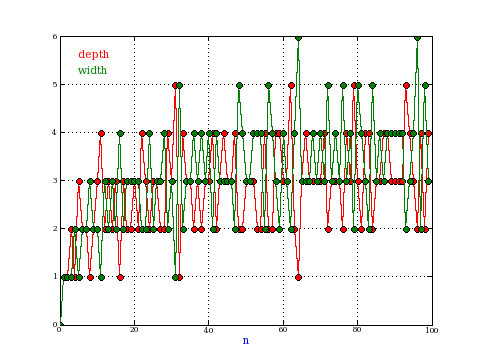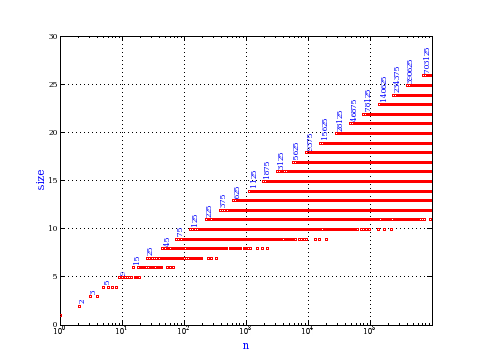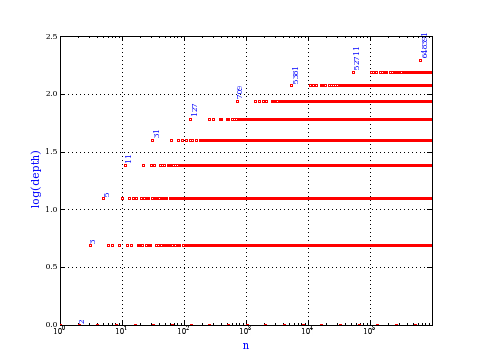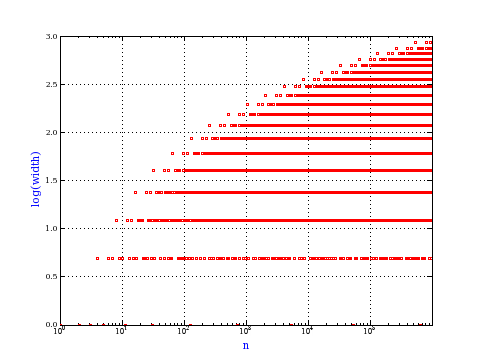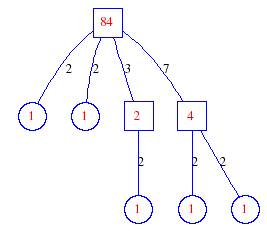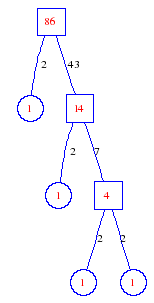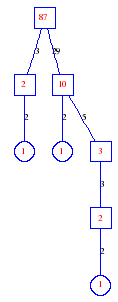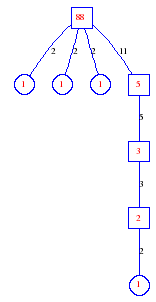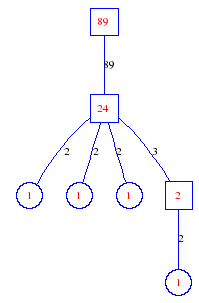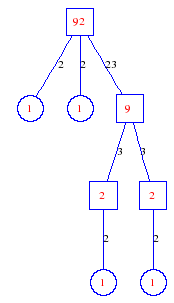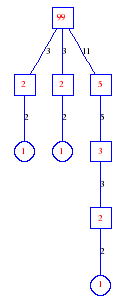|
|
This page was last modified 2024-01-21
| |||||||||||||||||||||||||||||||||||||||||||
Matula numbers and rooted treesIn SIAM Review volume 10, page 273, D. W. Matula described an interesting bijection between the set of positive integers and the set of rooted trees. This is defined by the following algorithm. Here π(x) is the number of primes less than or equal to x.
matula(n):
create a node(labelled n)
for each prime factor p of n:
add the subtree matula(π(p)), by an edge labelled p
return the node
exercises
size, depth and widthThe size is the number of nodes. The depth of a rooted tree is the maximum distance from the root to a leaf. The width of a rooted tree is the number of leaves. The plot shows the depth and width of the tree matula(n).
Exercise: how fast do these functions grow? Here is some more data for inspiration. For size and depth, the values of n corresponding to the first increase to a new maximum are labelled. diagrams of the treesHere are the Matula trees for n from 1 to 100. The edges are labelled by the prime factors. Leaves are denoted by circles.
Hint to exercise 3: Matula(n) is a binary tree for n=4, 14, 49, 86, 301, 454, 886, 1589, 1849, 3101, 3986, 6418, 9761, 13766, 13951, 19049, 22463, 26798, 31754, 48181, 51529, 57026, 75266, 85699, 93793, 100561, ... .
This website uses no cookies. This page was last modified 2024-01-21 10:57
by |
